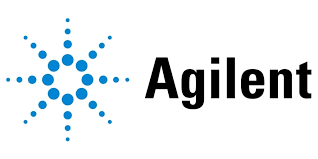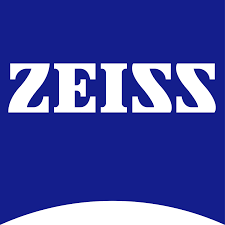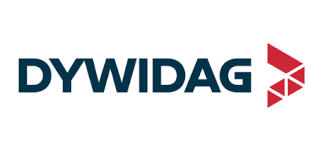Geo Fencing Software
Published Date: 29 September 2025 | Report Code: geo-fencing-software
Geo Fencing Software Market Size, Share, Industry Trends and Forecast to 2033
This report provides a comprehensive analysis of the Geo Fencing Software market between 2024 and 2033. It covers market insights including size, growth trends, regional analysis, segmentation, technology, product performance, and key players, offering strategic and data-driven insights for businesses and investors to understand future opportunities in this dynamic industry, enhancing deeper market predictive accuracy.
| Metric | Value |
|---|---|
| Study Period | 2024 - 2033 |
| 2024 Market Size | $1.80 Billion |
| CAGR (2024-2033) | 11.3% |
| 2033 Market Size | $4.91 Billion |
| Top Companies | Company A, Company B |
| Last Modified Date | 29 September 2025 |
Geo Fencing Software (2024 - 2033)
Geo Fencing Software Market Overview
Customize Geo Fencing Software market research report
- ✔ Get in-depth analysis of Geo Fencing Software market size, growth, and forecasts.
- ✔ Understand Geo Fencing Software's regional dynamics and industry-specific trends.
- ✔ Identify potential applications, end-user demand, and growth segments in Geo Fencing Software
What is the Market Size & CAGR of Geo Fencing Software market in 2024?
Geo Fencing Software Industry Analysis
Geo Fencing Software Market Segmentation and Scope
Tell us your focus area and get a customized research report.
Geo Fencing Software Market Analysis Report by Region
Europe Geo Fencing Software:
Europe, with its robust regulatory frameworks and commitment to technological innovation, shows promising market trends. The regional market is projected to grow from 0.64 in 2024 to approximately 1.76 in 2033, underpinned by strong investments in digital transformation and strategic market collaborations.Asia Pacific Geo Fencing Software:
In Asia Pacific, rapid urbanization, increasing smartphone penetration, and the growing adoption of connected devices drive the Geo Fencing Software market. The sector is expected to expand from a market value of 0.32 in 2024 to approximately 0.87 by 2033, fueled by digital transformation initiatives and investments in smart city solutions.North America Geo Fencing Software:
North America remains a major hub for Geo Fencing Software, with technological innovation and widespread adoption driving the market from a value of 0.60 in 2024 to about 1.63 by 2033. The focus on improved customer engagement and operational efficiency supports this growth.South America Geo Fencing Software:
South America, often represented by Latin America in market studies, is experiencing gradual yet consistent growth. Digital infrastructure expansion and increased business adoption of location-based services are expected to escalate the market from 0.17 in 2024 to around 0.46 by 2033, highlighting rising regional interest.Middle East & Africa Geo Fencing Software:
The Middle East and Africa, despite starting from a smaller base of 0.07 in 2024, present significant growth potential with a projected increase to 0.18 by 2033. Emerging digital initiatives and investments in modern technology infrastructure are key factors driving this upward trend.Tell us your focus area and get a customized research report.
Geo Fencing Software Market Analysis By Product Type
Global Geo-Fencing Software Market, By Product Type Market Analysis (2024 - 2033)
In the product type segment, innovative solutions such as mobile applications, web-based platforms, and hardware solutions are analyzed. Mobile applications hold a dominant market share, reflecting a consistent 64.29% in both 2024 and 2033, driven by the demand for on-the-go location services. Meanwhile, web-based platforms, accounting for 26.21%, provide substantial online integration, and hardware solutions, with a 9.5% share, offer specialized functionalities essential for precision tracking.
Geo Fencing Software Market Analysis By Application
Global Geo-Fencing Software Market, By Application Market Analysis (2024 - 2033)
The application segment scrutinizes multiple domains including retail, logistics & transportation, real estate, events and hospitality, and insurance. Retail services command a significant 43.92% share with robust market growth, expanding from 0.79 in 2024 to 2.15 in 2033, driven by personalized marketing and dynamic customer engagement. Logistics & transportation, real estate, events and hospitality, and insurance show stable demand, reflecting balanced market adoption and value creation across diverse sectors.
Geo Fencing Software Market Analysis By Deployment Model
Global Geo-Fencing Software Market, By Deployment Model Market Analysis (2024 - 2033)
Deployment model analysis highlights the contrast between cloud-based and on-premises solutions. Cloud-based models lead the market with an 86% share and exhibit significant scalability, growing from 1.55 in 2024 to 4.22 in 2033. In contrast, on-premises solutions maintain a steady presence with a 14% share, favored for their robust security and controlled environments, particularly in industries with stringent data governance needs.
Geo Fencing Software Market Analysis By Target Market
Global Geo-Fencing Software Market, By Target Market Market Analysis (2024 - 2033)
Target market segmentation differentiates between small & medium businesses and large enterprises. Small & medium businesses represent a dominant 86% share, experiencing resilient growth from 1.55 in 2024 to 4.22 in 2033, driven by the need for agile and cost-effective solutions. Large enterprises, while holding a 14% share, pursue specialized and high-performance systems that cater to complex operational demands, underlining the importance of tailored geo fencing functionalities.
Geo Fencing Software Market Analysis By Service Type
Global Geo-Fencing Software Market, By Service Type Market Analysis (2024 - 2033)
Service type segmentation focuses on consultation services and support and maintenance. Consultation services, commanding an 86% share, are crucial as they provide strategic guidance for the implementation and optimization of geo fencing solutions, with market size growth from 1.55 in 2024 to 4.22 in 2033. Conversely, support and maintenance, maintaining a steady 14% share, ensure system reliability and continuous operational performance, playing a vital role in customer satisfaction and long-term service excellence.
Geo Fencing Software Market Trends and Future Forecast
Tell us your focus area and get a customized research report.
Global Market Leaders and Top Companies in Geo Fencing Software Industry
Company A:
Company A is a pioneer in mobile application platforms and advanced geo fencing analytics. Their continuous investment in R&D has resulted in state-of-the-art location-based solutions that integrate seamlessly with IoT devices. Their innovative approach and strategic partnerships have positioned them as a key driver in market growth.Company B:
Company B has leveraged its extensive expertise in data analytics and cloud computing to offer comprehensive geo fencing solutions. Focused on real-time tracking and enhanced data security, Company B's cutting-edge products have set industry benchmarks, making them a top contender in the global market. Their commitment to innovation continues to shape market trends and foster competitive excellence.We're grateful to work with incredible clients.









FAQs
What is the market size of Geo Fencing Software?
The global Geo-fencing Software market is projected to reach approximately $1.8 billion by 2024, with a robust compound annual growth rate (CAGR) of 11.3% expected through 2033. This growth reflects increasing adoption across various sectors.
What are the key market players in the Geo Fencing Software industry?
Key players in the Geo-fencing Software market include major companies like GroundTruth, Software Developers, Geofeedia, and Mapbox. These players innovate solutions enhancing targeted advertising and real-time location data applications, driving competitive advantage in the sector.
What are the primary factors driving the growth in the Geo Fencing Software industry?
The growth in the Geo-fencing Software industry is driven by factors such as increasing smartphone penetration, a surge in location-based marketing, and the demand for personalized customer experiences. Additionally, advancements in AI and analytics enhance geolocation technologies.
Which region is the fastest Growing in the Geo Fencing Software market?
The fastest-growing region in the Geo-fencing Software market is North America, projected to grow from $0.60 billion in 2024 to $1.63 billion by 2033. This growth is fueled by high technological adoption and extensive marketing strategies leveraging geolocation.
Does ConsaInsights provide customized market report data for the Geo Fencing Software industry?
Yes, ConsaInsights offers customized market report data tailored to specific needs in the Geo-fencing Software industry. Clients can access deep insights and actionable data, enabling enhanced decision-making and strategic planning.
What deliverables can I expect from this Geo Fencing Software market research project?
From this Geo-fencing Software market research project, you can expect a comprehensive report that includes market size, growth forecasts, competitive analysis, segment insights, and regional trends. These deliverables are designed to inform strategic business planning.
What are the market trends of Geo Fencing Software?
Current trends in the Geo-fencing Software market include a rise in mobile application usage, increased integration of IoT devices, and a growing focus on data privacy regulations. Additionally, industries are leveraging AI for better location analytics, enhancing user engagement.
